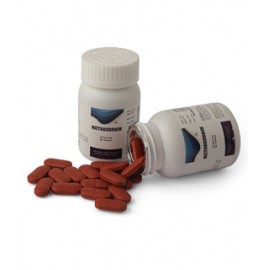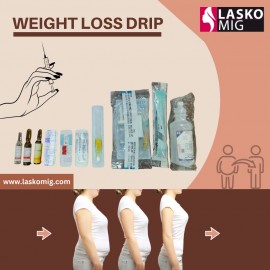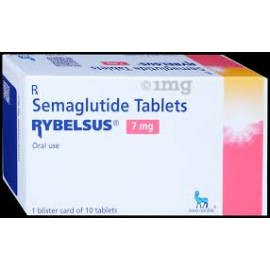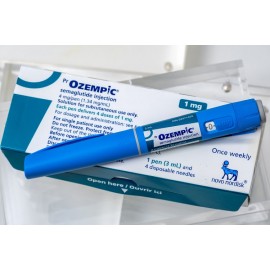HCG Diet
Recently Viewed
Product Description
The World Health Organization (WHO) now describes the prevalence of obesity as an epidemic. (Obesity is defined by percentage of body fat. Women with more than 32 per cent of their weight from fat and men with more than 25 per cent are deemed obese.) People all over the world are getting fatter than ever. Once considered a problem only in high-income countries, obesity is dramatically on the rise in low- and middle-income countries. In recent years, there has been a growing recognition of an emerging epidemic of obesity in the developing societies. In fact, the rate of increase in obesity prevalence in developing countries can often exceed that in the industrialised world. Indeed, the yearly rate of increase in overweight and obesity in regions of Asia, Africa and South America is two- to five-fold that seen in the United States.
Excess weight has reached epidemic proportions globally, with more than 1.7 billion adults being either overweight or obese..
WHO predicts there will be 2.3 billion overweight adults in the world by 2015, and more than 700 million of them will be obese.9 .
For thousands of years obesity was rarely seen. It was not until the 20th century that it became common, so much so that in 1997 the World Health Organization (WHO) formally recognized obesity as a global epidemic. As of 2005 the WHO estimates that at least 400 million adults (9.8%) are obese, with higher rates among women than men. As of 2008, The World Health Organization claimed that 1.5 billion adults, 20 and older, were overweight and of these over 200 million men and nearly 300 million women were obese. The rate of obesity also increases with age at least up to 50 or 60 years old. Once considered a problem only of high-income countries, obesity rates are rising worldwide. These increases have been felt most dramatically in urban settings.
Obesity has reached epidemic proportions in India in the 21st century, with morbid obesity affecting 5% of the country's population. India is following a trend of other developing countries that are steadily becoming more obese. Unhealthy, processed food has become much more accessible following India's continued integration in global food markets. Urbanization and modernization has been associated with obesity. In Northern India obesity was most prevalent in urban populations (male = 5.5%, female = 12.6%), followed by the urban slums (male = 1.9%, female = 7.2%). Obesity rates were the lowest in rural populations (male = 1.6%, female = 3.8%). Socioeconomic class also had an effect on the rate of obesity. Women of high socioeconomic class had rates of 10.4% as opposed to 0.9% in women of low socioeconomic class. With people moving into urban centers and wealth increasing, concerns about an obesity epidemic in India are growing.
Indians are genetically susceptible to weight accumulation especially around the waist. While studying 22 different SNPs near to MC4R gene, scientists have identified a SNP (single nucleotide polymorphism) named rs12970134 to be mostly associated with waist circumference.
This hypothesis was laid by Dr.Simeon few decades back and he performed clinical studies for the same observed very good and significant results.
Dr Simeons was a graduate of the University of Heidelberg Medical School in the 1920s. He chose endocrinology as his speciality, which in turn led to a fascination with tropical diseases such as malaria, dengue fever and leprosy. Simeons spent several years in Hamburg, focusing on the diagnosis and treatment of such diseases. In 1928, he travelled to central Africa to study these diseases personally. In 1931, Dr Simeons accepted a post in India, where he spent the next two decades. While there, he developed the use of the drug Atabrine, which became and remained for years a mainstay of conventional antimalarial treatment. He also investigated a new method of blood staining to better observe the malaria parasite. For his work against malaria, Dr Simeons was awarded the Order of Merit by the Red Cross. During World War II, he held several important Indian government posts, conducted extensive research on bubonic plague and also developed model centres for the treatment of leprosy.
After India became independent, Dr Simeons set up in private practice in Bombay (now Mumbai). In 1949, with his wife and three sons, Dr Simeons moved to Rome, where he worked on psychosomatic disorders at the Salvator Mundi International Hospital. He was regarded as one of the top research doctors in Europe. Although much of his early work was concerned with the infectious diseases malaria, leprosy and bubonic plague, psychosomatic disorders were another of Dr Simeons' interests.
As he travelled the world, Dr Simeons became fascinated with the condition of obesity, which was a relatively rare condition at that time. His research would lead him to investigate the links between endocrinology, obesity and psychosomatic disorders.
He studied every potential solution for obesity offered anywhere in the world. As part of his thorough investigation , he researched the thyroid, pituitary and adrenal glands, the pancreas, the gallbladder and over 100 other physiological functions. He could find no direct correlation between obesity and these various glands and organs. Dr Simeons finally concluded that the key to the obesity problem lies within the part of the brain called the diencephalon, a complex of structures that includes the thalamus and hypothalamus. It is particularly the compromised function of the hypothalamus, he discovered, that is at the core of the problem. According to Dr Simeons: "If obesity is always due to one very specific diencephalic deficiency, it follows that the only way to cure it is to correct this deficiency. At first this seemed an utterly hopeless undertaking. The greatest obstacle was that one could hardly hope to correct an inherited trait localised deep inside the brain, and while we did possess a number of drugs whose point of action was believed to be in the diencephalon, none of them had the slightest effect on the fat centre. There was not even a pointer showing a direction in which pharmacological research could move to find a drug that had such a specific action."
While it was commonly believed that overeating causes obesity, Simeons found that overeating is the result of a metabolic disorder—not its cause.
Now that he had discovered the long-sought-after cause, Dr Simeons was in pursuit of a solution. His "Eureka moment" came when he noticed that very thin pregnant Indian women, although having a low-caloric intake while at the same time doing demanding physical activity, delivered healthy full-weight babies. These pregnant women could easily lose weight by drastically reducing their dietary intake but without feeling hungry or in any way harming the child in the womb. After much research, he attributed this phenomenon to the presence of a substance called human chorionic gonadotrophin (hCG), which is made in high amounts in a woman's body during pregnancy.
He also reflected on the rare medical condition of young obese Indian boys, known as "fat boys", who were cured of their obesity with daily injections of small amounts of hCG: they miraculously lost their ravenous appetites and reshaped their bodies to normal.
Dr Simeons wondered if hCG could assist in opening the abnormal, secure reserves of fat in non-pregnant women and possibly even in men. Under normal conditions, these abnormal fat reserves are almost impossible to access and are only released as the body's last survival strategy during times of extreme starvation. However, Dr Simeons found one very interesting exception: hCG signals the body to mobilise these fat reserves. At his hospital, he experimented with this approach, using daily hCG injections combined with a very specific 500-calories-per-day diet. After many years of working with thousands of test patients, he perfected his "weight loss cure protocol". The results were astonishing. Almost 100 per cent of his patients were losing approximately one pound (0.5 kilogram) per day while on the protocol. And they were only losing the most difficult and resistant form of body fat, i.e., abnormal stored fat.
When you order from laskomig.com, you will receive a confirmation email. Once your order is shipped, you will be emailed the tracking information for your order's shipment. You can choose your preferred shipping method on the Order Information page during the checkout process.
The total time it takes to receive your order is shown below:

The total delivery time is calculated from the time your order is placed until the time it is delivered to you. Total delivery time is broken down into processing time and shipping time.
Processing time: The time it takes to prepare your item(s) to ship from our warehouse. This includes preparing your items, performing quality checks, and packing for shipment.
Shipping time: The time for your item(s) to travel from our warehouse to your destination.
Shipping from your local warehouse is significantly faster. Some charges may apply.
In addition, the transit time depends on where you're located and where your package comes from. If you want to know more information, please contact customer service. We will settle your problem as soon as possible. Enjoy shopping!
Related Products
Slimming Kit ( Non Surgical Liposucction )
https://www.youtube.com/watch?v=o8le6zuQLZA&t=251sHow to use slimming fluid YijiuShou Instructions : Twice a day , Spray once on an empty stomach in the morning and once before going to bedat n..
METABODRAIN Dietary support, Weight loss support
Dietary supplement.Part of a calorie controlled diet and exercise program.Clinically shown to stimulate fat loss when used as directed...
Reduce Drip Weight Loss - Dermalight Infusion
Reduce Drip Weight Loss - Dermalight Infusion..
Weight Loss Drip
Weight Loss Drip1 venflon - Rs. 1941 iv set - 1761 ns 100ml - 221 syringe 10ml - 121 Collagen C 1000 With Vitamin C Injection & Collagen Injection Rs. 5001 Extra..
Rybelsus 7mg Tablet semaglutide
Product introductionWeight ManagementWegovy onlyIndicated in combination with a reduced calorie diet and increased physical activity to reduceExcess body weight and maintain weight reduction long term..
Fytika Fit Liver For Men & Women - 60 Tablets
Fytika Fit Liver For Men & Women 60 TabletsFytika Fit Liver is a natural liver detox supplement that contains antioxidants and anti-inflammatory properties. These properties help improve liver hea..
Wellbeing Nutrition Burn Weight Management Supplement
Wellbeing Nutrition Burn Weight Management Supplement for Men & WomenAbout this itemCLINICALLY STUDIED CAPSIMAX TO MANAGE WEIGHT HOLISTICALLY: SLOW Burn comes with a powerful, synergistic mat..
Wellbeing Nutrition Liver Detox Supplement
Wellbeing Nutrition Liver Detox SupplementAbout this itemIMPROVEMENT IN FATTY LIVER GRADE: Slow's Liver Health is an advanced liver detox supplement helping in the management of fatty liver. Potent Mi..
Ozempic (semaglutide)
Ozempic (semaglutide) is a prescription drug used for certain conditions in people with type 2 diabetes. Ozempic is given as an injection under your skin.Ozempic can be prescribed for adults with ..


















-270x270.jpg)





